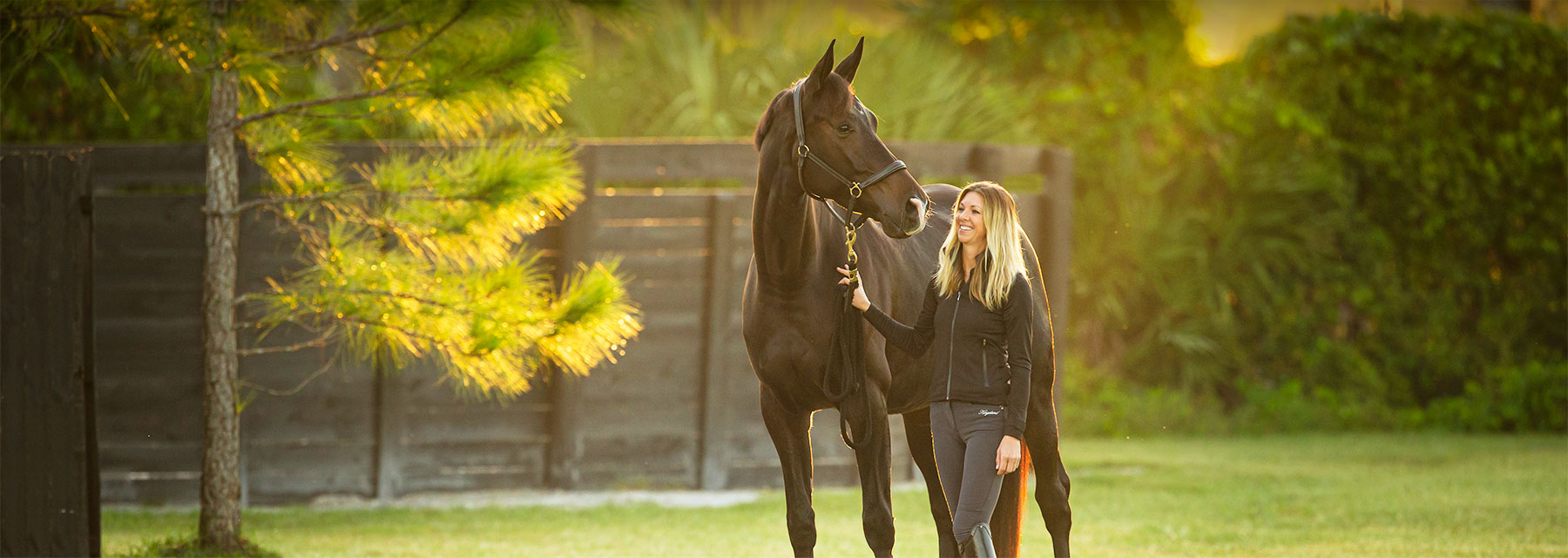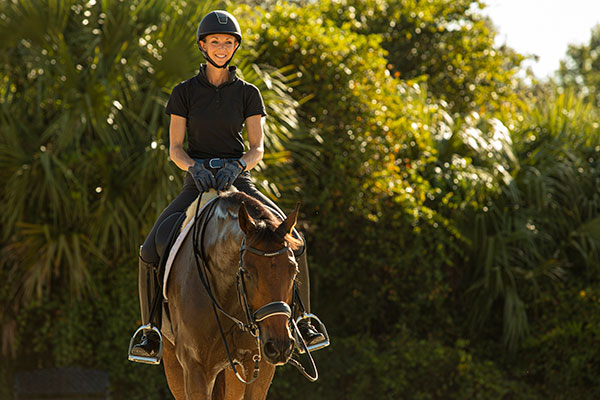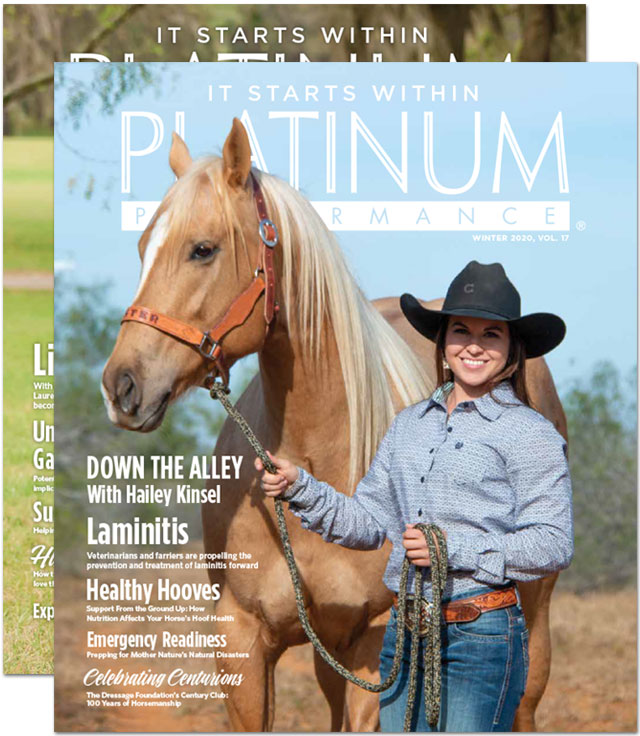I pride myself on being very hands-on and educated in all of the decisions made for my horses. From what they eat, to where they compete, how they are shod and their daily care.
I’m Laura Graves. I am a leading American dressage rider and was ranked top 10 in the World for many consecutive years. I pride myself on being very hands-on and educated in all of the decisions made for my horses. From what they eat, to where they compete, how they are shod and their daily care. I grew up in rural Vermont as the middle of three sisters. We were all actively involved in our local 4-H club. As I grew older, I was also active in our local riding and driving club and, later on, USDF, USEF and now FEI. Some of you may have heard the story of how we received our first two family ponies with the trade of a washer and dryer. But, seriously, most of our horses were in some way or another rescues and odd personalities that had trouble finding homes. It was quite the motley crew of Welsh ponies, Appaloosas, OTTB and even a Percheron, which we eventually bred to a Morgan to get our first “Warmblood!” The horses were a passion shared with my mother and myself since my sisters took to other sports. My commitment to horses and the riding were really the only place in my life where I excelled. When I was 14 years old, my parents were committed to giving me a real equestrian opportunity. So, on our modest budget, we decided to gamble on a high-quality foal, versus a lesser-quality schooled horse. Verdades eventually led me to the top of leader boards around the globe, and, in 2016, an Olympic bronze medal. He rocketed me to become the first-ever American to hold the number one spot on the FEI World Ranking list.
Because of Verdades, I am lucky to be in a position to have access to top veterinarians all over the world, and my knowledge and understanding of managing high-performance horses has evolved. But my philosophy of basic horse care has remained the same, albeit, more sophisticated. My barn feeds a forage-first diet. Most people have read the articles and try to do the same, but it is really harder than you think. Most of these high-performance horses are stalled for a significant portion of the day. Even in my unusual barn, my horses are only outside a maximum of eight hours per day. Many horse-people, myself included, have resorted to the slow-feed hay bag solution. But there is the compromise that the positioning for the horse’s neck is not natural. Recently, we installed automatic hay feeders in my barn that drop hay onto the floor of my horses’ stalls on a set timer. This allows us to feed on the ground, in set portions every few hours. It's a game changer. This is the foundation of our feeding program, and we top it off with high-quality supplements and minimal grain for calories.
The major point in managing horses at this level is exactly that — managing the horses. This means being on top of any and all small changes. When you are trying to be the best in the world, you are in constant competition as to who manages their horses the best. You can’t ride if you don’t have a healthy horse. It is not as simple as when I was a kid and my horse was a little off, and we would just give him a little rest. At this level, of course, the horses can rest, but I want my team to be able to determine why. Every bit of information I can learn about each horse allows me to make better decisions for him as his workload increases.
Travel, competition, stress. Your horse has to be ready to peak no matter what the surrounding circumstances. In a major championship year, we are on the road approximately 20 weeks out of the year. We often have international flights, which means quarantines. Of course, during this time on the road, pretty much everything changes — the climate, the water, the stabling, the schedule, lack of turnout and so on. We do make sure that we ship in hay and grain in order to keep things as regular as we can. Our vets and farriers travel with us.
Vets. I used to have just one vet. He vaccinated my horses. He ultra-sounded fat legs. He floated their teeth, too! Now, I have a team of vets. And I expect each one of them to have a team also. I want every member of my team to always be willing to reach out to a colleague to problem solve. I want every member of my team to want to be the best at what they do.
Vets are specialists now. There’s a vet for performance and soundness. There’s a vet for standard medicine like vaccines or emergencies. There’s a vet for chiropractic, acupuncture and Chinese herbs. There’s a vet for the team. You have physios for horse stretching and energy work — I’m not kidding! During standard “off” time, I'm in contact with my performance vet every week and my local vet at least twice a month. All information is relayed on to our team vet. During competition time, my top horse will see our vet at least once a week, and it is not atypical for my horse to see him before, during and immediately after high competition.
The level of soundness expected of these high-performance horses is extraordinary and borderline unreasonable. Because of the extremely strict medication restrictions within the FEI, a veterinarian’s job is strenuous. These are never young horses competing at this level either. We are limited by dosage and timelines and yet the expectation is that a 15-year-old horse trots out of his box as sound looking as a 3-year-old.
Because of these high expectations, ultrasounds are routine. And even MRIs, CTs and bone scans are often ordered without emergency or extraordinary cause, especially since the standing MRI is so widely available. Scanning and measuring whatever we can, whenever we have these windows of time, is one way we try to stay one step ahead.
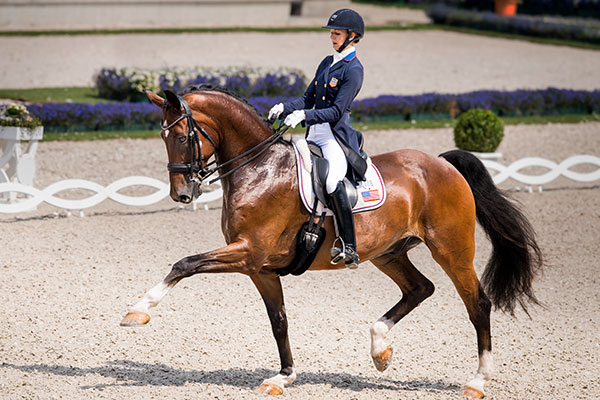
Laura Graves is an Olympic Bronze Medalist in dressage and was the first American ranked No. 1 in the FEI World Rankings. Her longtime partner, Verdades, was retired in 2020.
PHOTO BY SHANNON BRINKMAN
With a seemingly endless supply of information, the ability to decipher and make treatment decisions is the real meat of the job. The options in treatment and therapies are even more overwhelming than the diagnostics. Of course, steroids are still the most common and obvious way to treat joint inflammation. But regenerative treatments, such as stem cells, have come such a long way that they are also commonly used. No longer having to harvest, incubate and possibly have a bad reaction from the horse, we can overnight dental pulp cells for any number of purposes. We put them in lesions, in joints and even regional limb perfusions — all with, in my personal experience, excellent results. This is in addition to the PRP, IRAP and ProStride that are also common and effective, depending on the horse.
As owners, trainers, grooms and barn managers, the different therapy modalities are endless. It is expected that every high-performance barn has regular access to lasers, magnets, acupuncture, chiropractic and shockwave. Many owners are very capable of performing these treatments themselves and are especially looking for helpful therapies due to the strict FEI regulations. Even our equipment (class of laser, temperature of ice machine) has to be checked and approved for use in the FEI stabling. That includes treadmills, aqua treadmills, ice-water spa and heart monitor for strength building, recovery and regular monitoring.
Again, strict rules have forced owners, trainers and vets to look at the bigger picture. I have seen a horse go lame from ulcers. I have seen a horse go lame from tooth pain. The smallest part of my day is what I do in the saddle. Everything else I do ensures that those 30 or 40 minutes I'm training my horse are the most productive. This is how we build champions that last. Because at the end of the day, we are all here for the welfare of the horse.
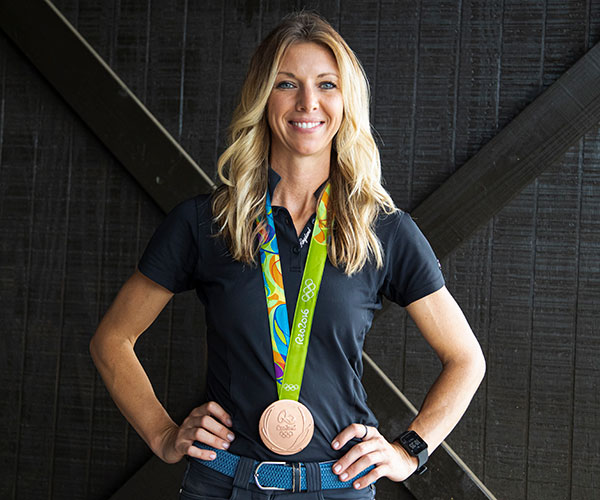
Laura Graves Over The Years
A Timeline of Success
2002
Laura and her mother bought Verdades from the Netherlands.
2009
Suffered from a broken back after being thrown from the saddle.
2014
Laura and Verdades started competing at the international Grand Prix level. She placed second overall at the American Dressage Championships in Gladstone, New Jersey, qualifying her for the 2014 World Equestrian Games (WEG). At WEG in Normandy, France, she finished fifth in the team, fifth in the freestyle and fifth in the special dressage competitions.
2015
Won team gold and an individual silver medal at the Pan American Games in Toronto, Ontario, Canada.
2016
Won team bronze and ended up fourth individually at her first summer Olympic Games in Rio de Janeiro, Brazil.
2018
After impressive team and individual silver medals at the World Equestrian Games in Tryon, North Carolina, Laura became the first American dressage rider to be ranked No. 1 in FEI World rankings.
2019
Qualified for the World Cup Finals held in Gothenburg, Sweden, where she earned a silver medal for the third consecutive time.
You May Also Like
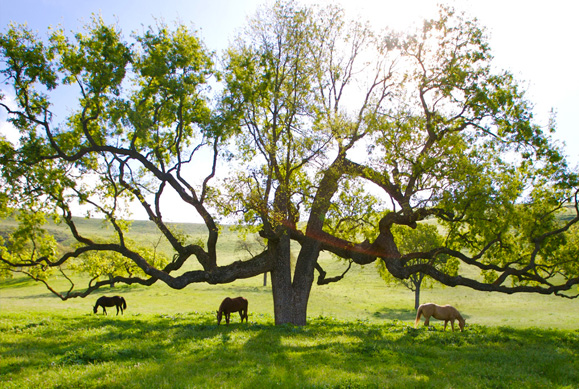
Nature Knows Best
The modern diet vs. the natural diet and the right balance of omega-3 fatty acids.
Read More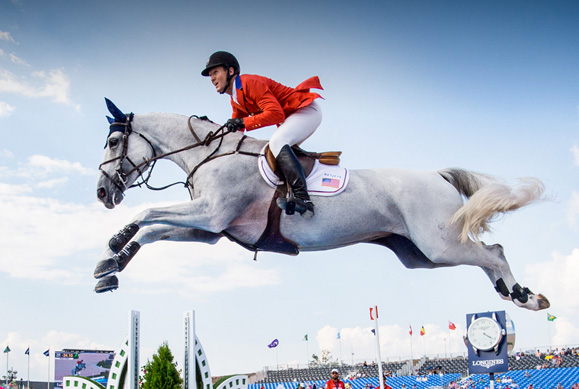
The Science of Sport
The Evolution of How We Treat, Condition & Feed the Competitive Athlete.
Read More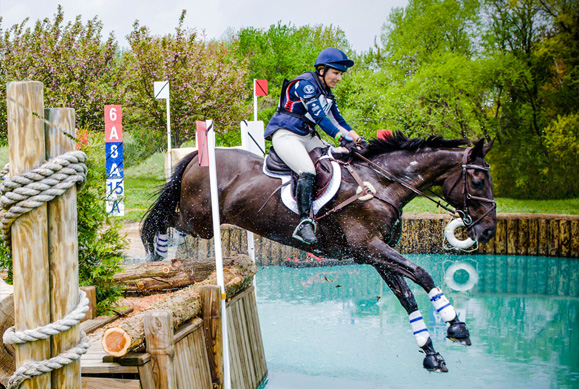
Aiding Joint Longevity
5 contributors to an unhealthy joint. Proactive care through proper diet and supplementation is key to joint longevity.
Read More